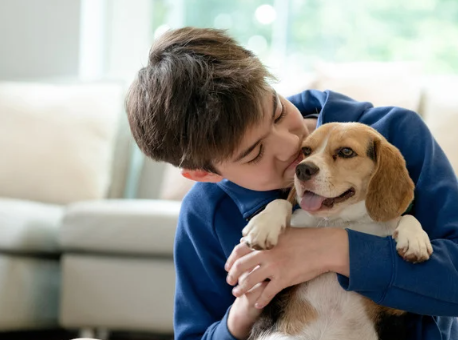By: Lauren Szyszka, Phone Department Supervisor

As summer winds down and routines shift—whether it’s the kids heading back to school, changes in your work schedule, or more time away from home—your pet may start to feel the difference.
Even subtle changes in your daily rhythm can have a big emotional impact. Pets thrive on consistency, and when their environment suddenly becomes quieter, less interactive, or more structured, it can leave them confused or stressed. While some animals adapt quickly, others may struggle—especially if they’re prone to separation anxiety or have gotten used to having their people around more often.
You might notice signs like pacing, vocalizing, hiding, changes in appetite, litter box accidents, or destructive behavior. These aren’t signs of disobedience—they’re signals that your pet is trying to cope with change the only way they know how.
The good news? A little preparation goes a long way. Here are some simple, proactive steps to help your pet—dog or cat—feel more secure and supported during this transition:
Practice Gradual Separations
Begin easing your pet into the upcoming routine by practicing short departures. Start with just a few minutes away and gradually build up. For cats, try short “alone time” sessions in a quiet room without you—especially helpful if they’ve gotten used to being with you all day.
Reinforce a Predictable Routine
Pets find comfort in consistency. Try to keep feeding, litter box care, walking, and playtimes as predictable as possible—even as your household gets busier. Cats in particular often rely on subtle environmental cues to feel safe, so maintaining familiar spaces, sleeping spots, and even window access can be calming.
Keep Their Minds Engaged
Mental stimulation helps pets burn off nervous energy and prevent boredom. Dogs may enjoy puzzle feeders, frozen treats, or scent-based games. For cats, rotate toys often and consider food-dispensing balls, cardboard box mazes, or vertical climbing shelves. Even simple things—like hiding a few treats around the house—can provide enrichment.
Add a Midday Break
If your pet will be alone for longer periods, consider ways to break up their day. For dogs, a walk, sitter visit, or even occasional daycare may be helpful. For cats, toys on timers or pet-safe cat TV (yes, really!) can offer entertainment. A cozy, quiet space with familiar blankets or a favorite perch can also help cats self-soothe.
Don’t Hesitate to Reach Out
If your pet is struggling, we’re here to help. Whether it’s a behavioral consultation, guidance on enrichment options, or support with calming products or short-term anxiety medications, we’re happy to partner with you to make the transition smoother—for every species in your home.
As the pace of life picks back up, our pets need time to adjust, too. With a little empathy and thoughtful planning, you can help them feel safe, supported, and emotionally balanced through every season of change.







